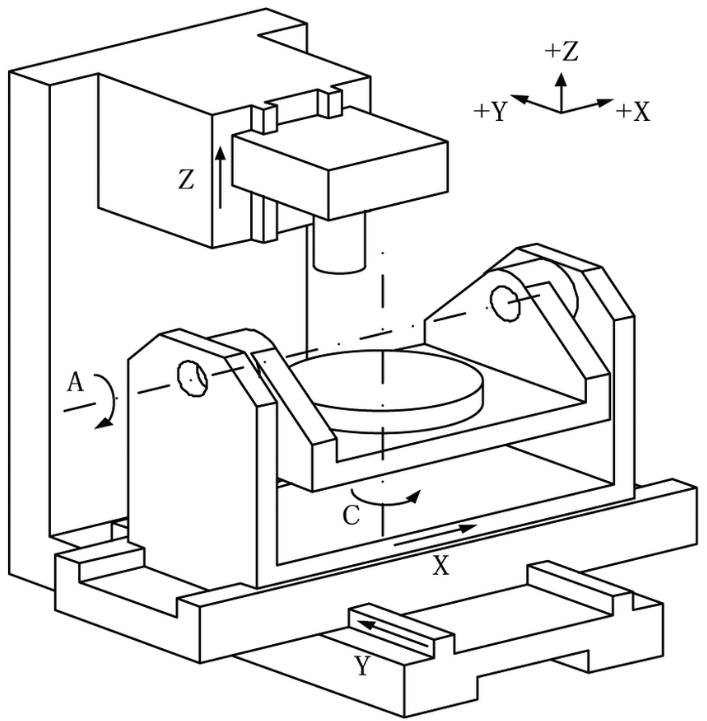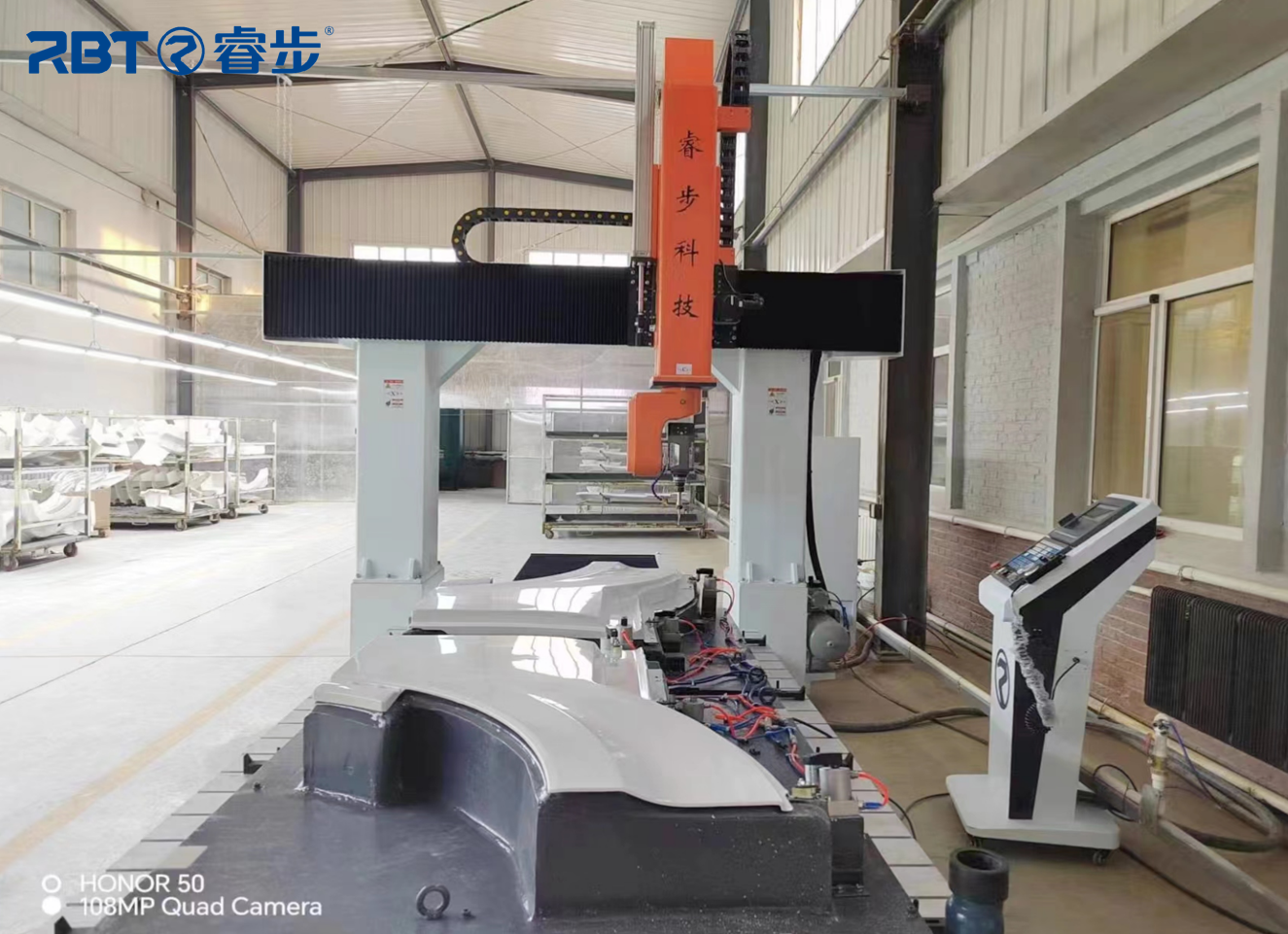Views: 0 Author: Site Editor Publish Time: 2025-03-20 Origin: Site








Did you know a 5-axis CNC machine can create highly complex parts with incredible precision? Understanding the 5-axis CNC coordinate system is key to unlocking this capability.
In modern manufacturing, CNC machines play a critical role in producing parts across industries like aerospace, automotive, and medical.
In this post, we’ll explore how the 5-axis CNC coordinate system works and why it’s so important for precise, efficient production.

The 5-axis CNC coordinate system refers to the ability of a CNC machine to move a cutting tool along five different axes. This allows for the precise manufacturing of complex parts. Unlike traditional CNC systems, which typically operate on three axes, the 5-axis system includes two additional rotational axes, enhancing flexibility and precision.
The X, Y, Z axes represent the three primary linear movements:
X-axis: Moves the tool left to right.
Y-axis: Moves the tool front to back.
Z-axis: Moves the tool up and down.
These axes are essential for basic machine movement and are the foundation for more complex cuts.
In a 5-axis CNC system, the tool is not only able to move linearly but can also rotate around two additional axes:
A-axis: Rotates the tool around the X-axis.
B-axis: Rotates the tool around the Y-axis.
This rotational movement enables the tool to approach the workpiece from various angles, making intricate cuts possible without re-positioning the workpiece.
In a 5-axis CNC system, all five axes—X, Y, Z, A, and B—work in unison. The machine can rotate the workpiece while the tool remains fixed, allowing for detailed cuts from multiple angles. This synergy is crucial for creating complex geometries and parts that would be difficult to achieve with only three axes.
The 5-axis CNC system significantly improves precision, allowing for highly detailed cuts and complex geometries. By moving the cutting tool along five axes, it reduces errors that may occur with simpler 3-axis systems. This capability is especially important when working with intricate parts that require tight tolerances, such as turbine blades or medical implants.
With the ability to approach the workpiece from various angles, the 5-axis system ensures cuts are more precise, minimizing the need for rework and improving overall part quality.
One of the key advantages of the 5-axis system is its ability to reduce setup time. In traditional machining, complex parts often require multiple setups to be manually repositioned. However, the 5-axis machine can perform multi-angle cuts without moving the workpiece, reducing the need for time-consuming adjustments.
Fewer setups mean increased efficiency and faster production times, which is essential in industries where time and cost are critical factors, such as aerospace and automotive manufacturing.
The 5-axis CNC coordinate system is perfect for machining complex parts that require multiple angles and high precision. Components like gears, aerospace parts, and medical tools benefit from the machine’s ability to handle intricate shapes and tight tolerances. The system allows cutting from various angles without repositioning the part, improving precision and reducing production time.
For example, parts like turbine blades in the aerospace industry require precise cuts, which are easily achieved with 5-axis CNC machines.
5-axis CNC machines are essential for creating molds and tooling, where precision and intricate shapes are required. In mold making, the ability to rotate the workpiece at multiple angles ensures that complex features can be added to molds, such as undercuts or detailed textures. The 5-axis system enhances the ability to produce high-quality, accurate molds for industries like automotive and plastic injection molding.
The 5-axis CNC system is often used in prototyping and customization, allowing manufacturers to quickly produce custom parts. Whether it’s for one-off parts or small production runs, the flexibility of 5-axis machines helps create prototypes that meet exact specifications. Industries like medical and automotive benefit greatly from this ability to rapidly design and modify parts.
To maximize the benefits of 5-axis machining, it's essential to ensure accurate setups. Here are some tips:
Check machine calibration regularly to ensure precision.
Use proper fixturing to secure the part, minimizing errors.
Optimize cutting paths using CAD and CAM software to reduce cycle times and improve accuracy. Software integration helps generate efficient tool paths, ensuring that the machine runs smoothly.
By focusing on accurate setups and efficient machine programming, you’ll fully harness the power of the 5-axis CNC system.
The material you choose can significantly affect machining results. Common materials for 5-axis CNC machining include:
Metals: Aluminum, steel, and titanium are commonly used for high-strength parts.
Plastics: Polymers like ABS and PVC are easier to machine but still offer good precision.
Composites: Materials like carbon fiber require specialized tooling but are perfect for lightweight, high-performance parts.
Choosing the right material ensures smoother cutting, longer tool life, and better part quality.
Operating a 5-axis CNC machine requires specialized skills. Proper training is critical for:
Understanding machine capabilities and limits.
Interpreting CAD models and translating them into CAM software.
Safely handling complex setups and ensuring safety standards.
Training ensures that operators can get the best results from the machine while minimizing errors and improving efficiency.
The main difference between 3-axis and 5-axis CNC machines lies in the number of axes that control movement:
3-axis CNC: Moves the cutting tool along three axes—X, Y, Z—allowing basic cuts in a straightforward, linear direction.
5-axis CNC: In addition to the three linear axes, it includes two rotational axes (A and B), allowing the tool to rotate and access multiple angles.
This added rotational movement enables the 5-axis CNC machine to make much more complex cuts, handle intricate shapes, and reduce the need for multiple setups. This is essential for industries like aerospace and medical, where parts require high precision and multiple angles.
4-axis CNC machine has one additional rotational axis compared to a 3-axis machine. The fourth axis typically rotates around the X-axis (A-axis), allowing the workpiece to turn while the cutting tool remains stationary. 4-axis CNC: Offers greater flexibility than a 3-axis machine but still requires repositioning the workpiece for cuts from other angles. 5-axis CNC: Provides even more movement by adding an additional B-axis, which rotates around the Y-axis. This eliminates the need for repositioning the workpiece during machining, allowing for more complex parts to be made more efficiently.
While 5-axis CNC machines are more versatile and precise, 4-axis machines are typically more affordable and suitable for parts with less intricate designs.

5-axis CNC machines are rapidly evolving, thanks to advancements in both software and hardware. CAM software has become more intuitive, allowing operators to easily program complex cuts and optimize machine performance. Meanwhile, hardware improvements in motors, sensors, and cooling systems have made machines faster, more accurate, and more energy-efficient.
Automation and AI are also playing a growing role in the future of CNC machining. AI-driven systems can analyze and adapt machining processes in real-time, increasing efficiency and reducing errors. Automation allows for lights-out machining, meaning machines can run autonomously, further boosting productivity and reducing labor costs.
At RBT Intelligent Equipment, we are at the forefront of these technological advancements. With over 24 years of experience in the CNC machining industry, our cutting-edge 5-axis CNC machines are designed to meet the needs of industries such as aerospace, automotive, and medical.
The future of 5-axis CNC systems will significantly change modern manufacturing. With ongoing improvements in materials and machine capabilities, these systems can handle more complex designs and create parts with greater precision. Innovations in composite materials and lightweight alloys are making it possible to produce high-performance parts that were previously impossible or costly to make.
The ability of 5-axis machines to produce highly intricate components will have a lasting impact on industries like aerospace, medical devices, and automotive. As machines become smarter and more capable, they will enable faster prototyping, custom part production, and high-volume manufacturing, reshaping how industries approach design and production.
The 5-axis CNC coordinate system plays a vital role in precision machining. It offers unmatched accuracy, efficiency, and versatility across various industries. By enabling complex cuts, it opens up new possibilities for part production.We encourage you to explore how 5-axis CNC systems can enhance your business.
Contact RBT for more information or to request a demo of our 5-axis CNC machines.
A: Industries such as aerospace, automotive, medical, and electronics benefit greatly from 5-axis CNC machines due to their ability to handle complex, high-precision parts.
A: 5-axis CNC machines can handle a wide range of materials, including metals, plastics, and composites, making them versatile for various industries.
A: Parts with complex geometries and intricate cuts, like turbine blades, engine components, and medical implants, are well-suited for 5-axis machining.
A: Common challenges include setup complexity, machine programming, and operator skill requirements, which can affect efficiency and part quality.
A: The 5-axis CNC system allows cuts from multiple angles, reducing errors, improving accuracy, and eliminating the need for part repositioning during machining.